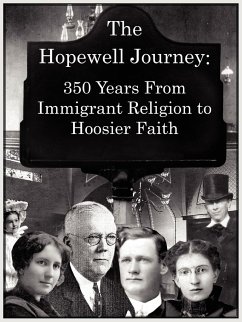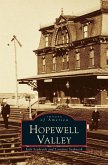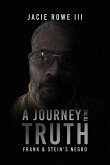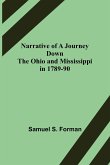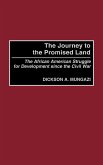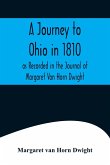"The Hopewell Journey: 350 Years from Immigrant Religion to Hoosier Faith; Hopewell Presbyterian Church 1831-2006" is the story of devout European Christians who sailed from The Netherlands for the New World in 1651 in search of freedom - mainly freedom in the way they worshiped God. That group of Lowlands Dutch, French Huguenots and English settlers reached Nieu Amsterdam (New York). Before long, they swore allegiance to their new country but struggled to preserve their Dutch language, way of life and worship. When their closely-knit group of descendants began feeling hemmed in, families moved en mass in the early 1700s to New Jersey and, a few years later, near Gettysburg, Pennsylvania, developing the Conestoga wagon. In the late 1770s, families again packed up, loaded their wagons and traversed valleys in the Appalachian Mountains into Kentucky where they settled 5,945 acres sold to them in 1786 by Daniel Boone's brother, Squire, ancestor of two Hopewell Church members. Their final move began in 1823 when Simon Covert discovered Hopewell's Big Spring, ending an almost 300-year saga with a permanent settlement west of Franklin, Indiana. This book also celebrates the farming community encircling Hopewell Presbyterian Church, founded May 23, 1831. Fourteen families, descendants of those founders still worship at the church, live here and farm or work elsewhere. Once established in a Johnson County area comparable in size to that in Kentucky, the settlers never again moved as a group. Only a few continued west - to establish churches, serve as ministers (almost 20), as missionaries (three) and to seek gold. Historians look at the Hopewell settlement and its accomplishments as the one most like the immigrants' vision of what their community could and should be. Indiana pioneers overcame severe hardships in a tangled wilderness; prospered and their children built notable houses, five of which enclose original log dwellings. Their descendants engaged in innovative farm practices; some were inventors. Illustrated stories of and by those people, their homes, their lives and Hopewell events continue the immigrants' "journey" to the present. Everyone's story is different and interesting.
Hinweis: Dieser Artikel kann nur an eine deutsche Lieferadresse ausgeliefert werden.
Hinweis: Dieser Artikel kann nur an eine deutsche Lieferadresse ausgeliefert werden.

